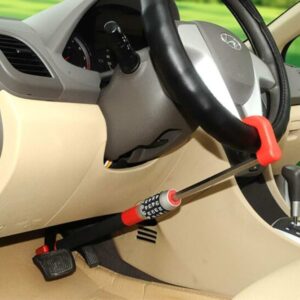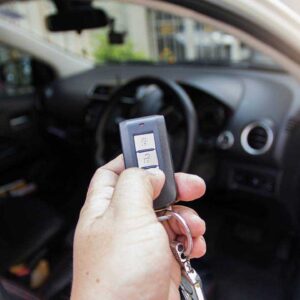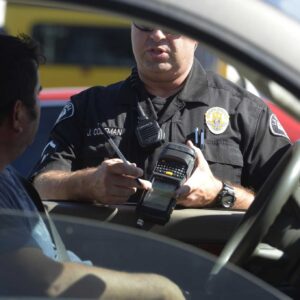Introduction: Clearing the Air on No-Fault Auto Insurance in Ohio
If you’re an Ohio driver, you may have heard whispers about “no-fault” auto insurance—sometimes in casual conversation, other times in alarmist headlines promising big changes. The reality is a bit more nuanced, and understanding how Ohio’s system works (and doesn’t work) can save you time, money, and headaches down the road. In this post, we’ll demystify:
- What “no-fault” auto insurance really means
- Why Ohio operates under a different model
- Which coverages you do need (and which are optional)
- How fault and comparative negligence affect your claim
- Practical tips for choosing the right policy for your needs
Let’s jump in, clear up common misconceptions, and arm you with the knowledge you need to drive—and insure—your vehicle with confidence.
What Is No-Fault Auto Insurance?
No-fault auto insurance is designed to streamline the claims process by having each driver’s own insurer pay for their medical expenses and certain other losses, regardless of who caused the accident. Key characteristics include:
- Personal Injury Protection (PIP) Coverage
Required in genuine no-fault states, PIP typically covers medical bills, lost wages, and sometimes essential services like childcare. - Limited Right to Sue
Drivers can only file a lawsuit against an at-fault party if their losses exceed a predetermined threshold, such as total medical bills above a set dollar amount or injuries deemed “serious.” - Reduced Litigation
By emphasizing quick payment through PIP, no-fault aims to lower legal costs and speed up recovery.
States like Florida, Michigan, and New York maintain robust no-fault systems, mandating PIP as part of every auto insurance policy. In these jurisdictions, you turn to your own insurer first—regardless of fault—to get the help you need after a crash.
Ohio’s At-Fault System: What Drivers Need to Know
Contrary to what some might expect, Ohio is not a no-fault state. Instead, Ohio uses a traditional at-fault (tort) system, where the driver responsible for the collision—or more precisely, their insurer—is on the hook for damages and medical expenses. This structure hinges on negligence law:
- Duty of Care
Every driver must operate their vehicle safely and obey traffic laws. - Breach of Duty
If a driver acts recklessly—say, by running a red light—they breach that duty. - Causation
The breach must directly cause the accident and resulting injuries. - Damages
Injured parties recover for medical bills, lost wages, pain and suffering, and property damage.
Learn more about Ohio’s at-fault framework on the Buckeye Law Group blog
Because fault matters, gathering evidence—police reports, photos, witness statements—is crucial. If you’re found partially at fault, Ohio’s modified comparative negligence rule can reduce your recovery proportionally. We’ll unpack that below.
Ohio’s Minimum Auto Insurance Requirements
Even though Ohio doesn’t mandate PIP, it does require all drivers to carry minimum liability coverage. These state-set limits form the foundation of your policy:
| Coverage Type | Minimum Requirement |
|---|---|
| Bodily Injury Liability | $25,000 per person, $50,000 per accident |
| Property Damage Liability | $25,000 per accident |
These limits are the bare minimum. Many drivers elect higher limits to protect against steep medical bills or litigation. We’ll discuss optional coverages that reinforce your safety net.
Personal Injury Protection (PIP) in Ohio: Optional, but Powerful
While Ohio drivers aren’t required to carry PIP, adding it to your policy can offer significant benefits:
- Immediate Medical Expense Coverage
PIP pays your medical bills—regardless of fault—without waiting for liability disputes to resolve. - Lost Wages and Essential Services
Many PIP plans cover a portion of lost income and services like childcare if you’re injured. - Coverage for Passengers and Non-Drivers
Even pedestrians and bicyclists hit by your vehicle may qualify under your PIP.
For an overview of PIP provisions and benefits, see the Wikipedia entry on Personal Injury Protection.
Since PIP funds don’t hinge on fault, they can speed up treatment and reduce reliance on health insurance—particularly valuable if you have high deductibles. However, be aware that if you later receive compensation from the at-fault party, you may need to repay your insurer’s PIP payout.
Comparative Negligence in Ohio: Sharing the Blame
Ohio’s modified comparative negligence approach means you can recover damages as long as you’re not more than 50% at fault:
- 0–50% At Fault: You recover your total damages minus your percentage of fault (e.g., 30% at fault = recover 70% of damages).
- Over 50% At Fault: You cannot recover any compensation.
Understanding this rule is vital when negotiating with insurers or preparing for litigation. Keep meticulous records—medical bills, repair estimates, and any proof of the other driver’s fault (tickets, citations, witness statements).
Common Misconceptions About No-Fault Insurance in Ohio
It’s easy to mix up no-fault terminology. Let’s debunk a few myths:
- Myth: Ohio Requires PIP on Every Policy
Reality: PIP is optional in Ohio; only true no-fault states mandate it (gillespielawohio.com). - Myth: You Can’t Sue Unless You Have PIP
Reality: In Ohio, you sue the at-fault party—and their insurer—directly, regardless of PIP. - Myth: No-Fault Means No Litigation
Reality: Even in no-fault states, serious cases often end up in court. Ohio drivers already rely on litigation to resolve liability.
By clarifying these points, you’ll avoid overpaying for unnecessary coverages or mishandling a claim.
Side-by-Side: No-Fault vs. At-Fault Systems
| Feature | No-Fault States | Ohio At-Fault State |
|---|---|---|
| Mandatory PIP | Yes | No (Optional) |
| Primary Payout Source | Your own insurer (PIP) | At-fault driver’s liability insurer |
| Right to Sue | Only if losses exceed threshold | Anytime for full damages (subject to fault) |
| Litigation Frequency | Limited by thresholds, but still common | Standard; based on proving negligence |
| Claim Processing Speed | Faster initial payouts via PIP | Potentially slower if fault dispute arises |
| Coverage for Lost Wages | Typically included in PIP limits | Only if the at-fault insurer agrees or court orders |
| Applicability to Pedestrians | Covered under PIP of motorists | Pedestrians must sue at-fault driver |
This table highlights why some drivers still choose PIP in at-fault states like Ohio—even though it isn’t required—to enjoy the quick access to benefits found in pure no-fault jurisdictions.
Real-World Scenario: Why Optional PIP Matters
Case Study: Jane, a Dayton resident, was rear-ended on her way to work. She opted for a $10,000 PIP rider on her policy.
- Immediate Relief: Jane’s PIP covered her hospital bills and two weeks of lost wages within days—her health insurer didn’t get involved.
- Liability Dispute: The other driver’s insurer contested fault, delaying their payment for months.
- Payout Repayment: Once Jane settled with the at-fault party, she reimbursed her insurer for the PIP benefits.
Without PIP, Jane would have relied on her health insurance (subject to deductibles and co-pays) and waited longer for compensation under Ohio’s standard at-fault process.
Tips for Choosing the Right Ohio Auto Insurance Policy
Selecting the ideal policy requires balancing cost, coverage, and peace of mind. Consider these steps:
- Assess Your Budget and Risk Tolerance
- Higher liability limits mean higher premiums but greater protection.
- PIP riders add cost but can expedite your recovery.
- Review Optional Coverages
- Uninsured/Underinsured Motorist (UM/UIM): Vital if you’re hit by a driver with inadequate coverage.
- Collision and Comprehensive: For damage to your own vehicle—often required if you finance your car.
- Medical Payments (MedPay): Similar to PIP but usually limited to medical expenses only.
- Compare Multiple Quotes
- Use online tools or a broker to shop at least three carriers.
- Ask about discounts (safe driver, multi-policy, good student).
- Read the Fine Print
- Understand deductibles, coverage limits, and subrogation rights (your insurer’s repayment claims).
- Regularly Review Your Policy
- Life changes—like a new driver in the household—warrant updates to your coverage.
By following these guidelines, you can build a customized policy that fits your lifestyle and Google searches like “Ohio no-fault auto insurance” will land you the right answers.
Navigating the Claims Process in Ohio
Filing a claim in an at-fault state involves several steps:
- Ensure Safety First
- Check for injuries; call 911 if anyone is hurt.
- Move vehicles out of traffic if possible.
- Document the Scene
- Photos of vehicle damage, road conditions, license plates.
- Get contact and insurance info from all drivers.
- Record witness names and statements.
- Notify Your Insurer Promptly
- Provide factual details without assigning blame.
- Ask about optional coverages like MedPay or PIP (if you carry them).
- File a Liability Claim with the At-Fault Driver’s Insurer
- Submit medical bills, repair estimates, and your statement.
- Keep copies of every document.
- Negotiate or Litigate
- If the insurer denies or undervalues your claim, consider mediation or small-claims court for lower-dollar cases.
- For serious injuries, consult an attorney experienced in Ohio negligence law.
Staying organized and proactive can make a world of difference in how quickly—and fully—you’re compensated.
Ohio Driver Testimonials: Learning from Experience
“I never thought I’d need PIP until I did. Having that rider meant I didn’t have to wait for weeks to get treatment.”
— Marcus, Columbus
“I was partially at fault and assumed I’d get nothing. Instead, I was able to recover 70% of my damages thanks to Ohio’s comparative negligence rule.”
— Lisa, Cleveland
These real-user insights underscore why understanding Ohio’s unique mix of at-fault law and optional PIP can pay dividends when the unexpected happens.
Conclusion: Stay Informed, Stay Protected
No-fault insurance has its advantages, but Ohio’s at-fault system remains in place—complete with optional PIP and MedPay coverages that mimic some no-fault benefits. Here’s what every Ohio driver should remember:
- Ohio is an at-fault state; fault determines who pays.
- Minimum liability limits are $25,000/$50,000/$25,000, but you can—and often should—carry more.
- PIP is optional but offers fast relief for medical expenses, lost wages, and more.
- Comparative negligence can reduce or bar your recovery if you’re over 50% at fault.
- Shop smart: compare quotes, read policy details, and revisit coverage as your life evolves.
By arming yourself with these insights, you’ll navigate Ohio’s auto insurance landscape with confidence—whether you’re choosing a new policy or filing a claim. Safe travels!






